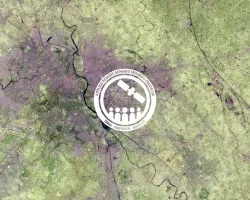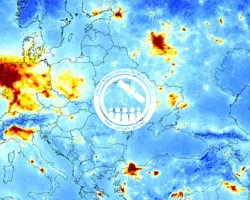Description
At night, satellite images of Earth capture a uniquely human signal - artificial lighting. Remotely-sensed lights at night provide a new data source for improving our understanding of interactions between human systems and the environment. NASA has developed the Black Marble, a daily calibrated, corrected, and validated product suite, so night light data can be used effectively for scientific observations. Black Marble is playing a vital role in research on light pollution, illegal fishing, fires, disaster impacts and recovery, and human settlements and associated energy infrastructures. The data (originally retrieved from the VIIRS day night band sensor) has been corrected by multiple novel algorithms, providing high-quality, cloud-free, atmospheric-, terrain-, vegetation-, snow-, lunar-, and stray light-corrected nighttime radiances.
This webinar will focus on building the skills needed to choose the appropriate night lights product, acquire and understand Black Marble data, and how to use the data in analyses for tracking urbanization, electrification, and disaster monitoring.
This work was partially supported by the GEO Human Planet Project #16-GEO16-0055.
- Session 1 of Fundamentals of Remote Sensing
If you wish to follow along with the demonstration associated with this webinar, please complete the following:
- Install QGIS: https://www.qgis.org/en/site/forusers/download.html
By the end of this training, participants will be able to:
- Understand the new capabilities of NASA’s Black Marble product suite and which product categories (VNP46A1 vs. VNP46A2) to use for different science applications
- Learn the basics of how to acquire information in Black Marble nighttime lights data
- Interpret Black Marble science data sets (SDS), quality flags, and create time-series analyses
- Apply products in topics relevant to the UN Sustainable Development Goals (SDGs), e.g. tracking urbanization, disaster recovery, and electrification
Local, regional, state, federal, and international organizations interested in global Earth system science and applications to topics relevant to the SDGs: tracking urbanization, disaster monitoring, and electrification.
- One 2-hour session
- A certificate of completion will be provided to participants that attend the live webinar and complete the homework assignment. Note: Certificates of completion only indicate the attendee participated in all aspects of the training. They do not imply proficiency on the subject matter, nor should they be seen as a professional certification.
- Click here for the webinar in Spanish
- Understanding nightlights (NTL) data collection and the variety of light sources that are captured in Black Marble data
- Comparison of existing night lights products and new features
- Technical description of Black Marble
- Data download
- Post-processing and quality assessment
- Data applications (monitoring urbanization, electrification, and the impact of disasters on the electrical grid)
Materials:



